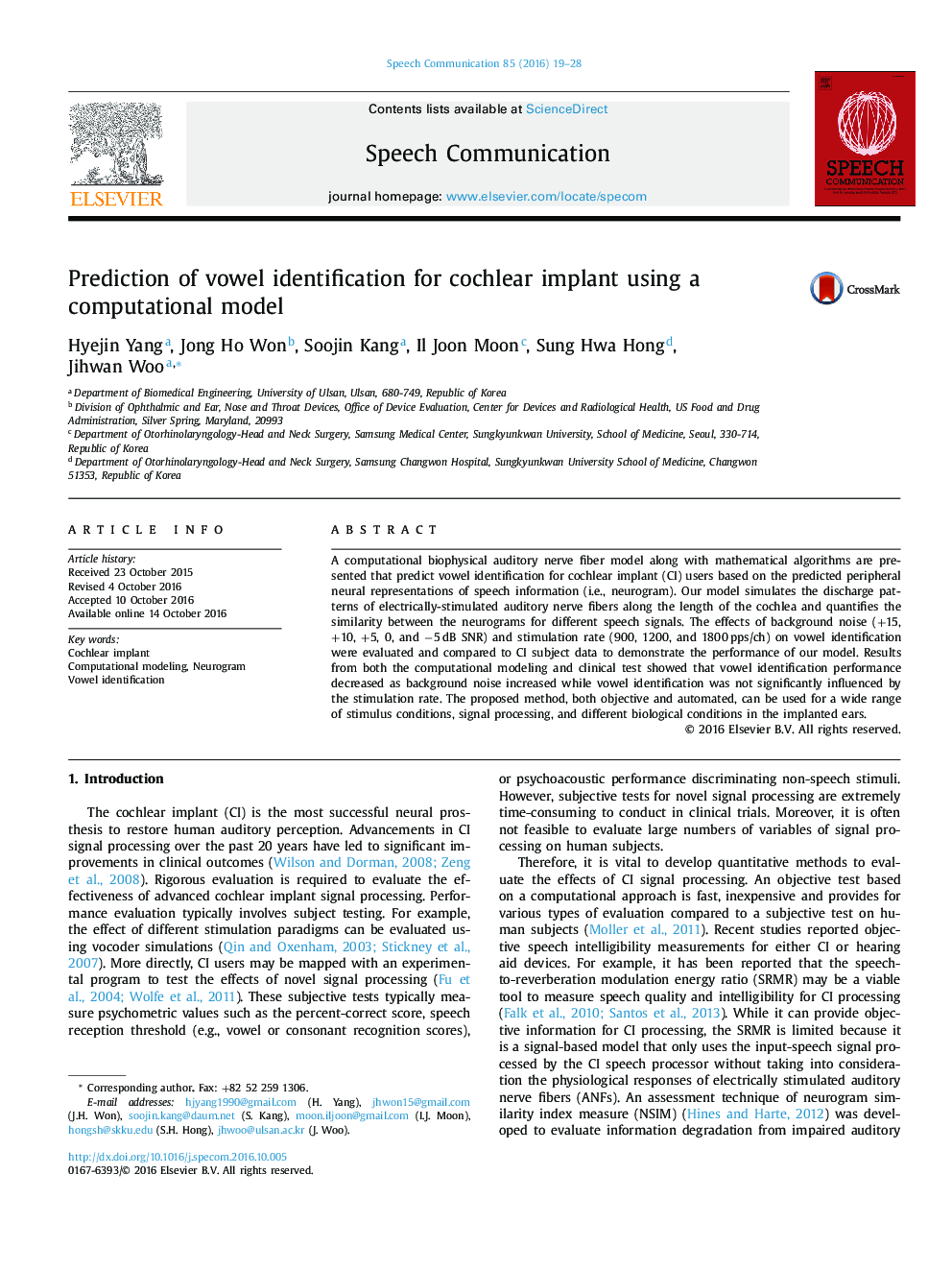| Article ID | Journal | Published Year | Pages | File Type |
|---|---|---|---|---|
| 4977858 | Speech Communication | 2016 | 10 Pages |
Abstract
A computational biophysical auditory nerve fiber model along with mathematical algorithms are presented that predict vowel identification for cochlear implant (CI) users based on the predicted peripheral neural representations of speech information (i.e., neurogram). Our model simulates the discharge patterns of electrically-stimulated auditory nerve fibers along the length of the cochlea and quantifies the similarity between the neurograms for different speech signals. The effects of background noise (+15, +10, +5, 0, and â5Â dB SNR) and stimulation rate (900, 1200, and 1800Â pps/ch) on vowel identification were evaluated and compared to CI subject data to demonstrate the performance of our model. Results from both the computational modeling and clinical test showed that vowel identification performance decreased as background noise increased while vowel identification was not significantly influenced by the stimulation rate. The proposed method, both objective and automated, can be used for a wide range of stimulus conditions, signal processing, and different biological conditions in the implanted ears.
Keywords
Related Topics
Physical Sciences and Engineering
Computer Science
Signal Processing
Authors
Hyejin Yang, Jong Ho Won, Soojin Kang, Il Joon Moon, Sung Hwa Hong, Jihwan Woo,
